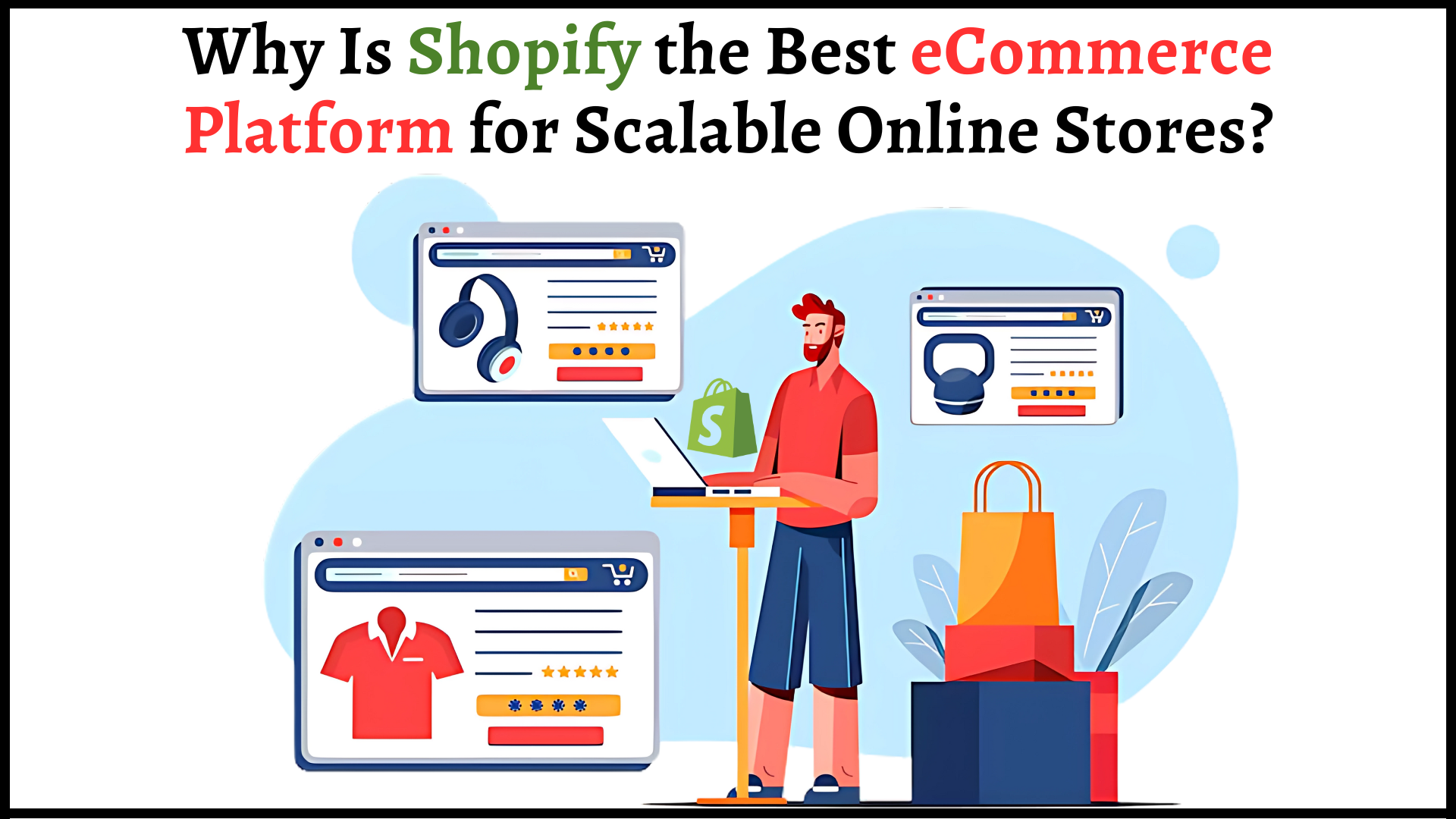- What is Headless WordPress?
- Traditional WordPress vs Headless WordPress
- How Headless WordPress Development Works?
- What’s the Difference Between Headless vs Decoupled CMS?
- Benefits of Headless WordPress Development
- Use Cases of Headless WordPress in Real-World Scenarios
- Challenges and Considerations in Headless WordPress Development
- How to Get Started With Headless WordPress Development?
- How Much Does a Headless WordPress Development Cost?
- Is Headless WordPress Right for You?
- Partner With CSSChopper for a Scalable Headless WordPress Development
Content delivery is no longer limited to just websites built on traditional CMSs like WordPress. Today, brands focus on creating an omnichannel presence across various platforms. Traditional WordPress was not built for this, as this demands flexibility and scalability on par. This is where Headless WordPress development steps in.
It’s a decoupled architecture approach that separates the back-end (content management) from the front-end (content presentation). This approach helps businesses like yours break free from the design and delivery constraints of traditional CMS platforms, offering improved performance, scalability, and security.
In this article, we will explore the benefits of headless WordPress development and how you can integrate this one of the effective modern WordPress web development trends into your workflow.
What is Headless WordPress?
The digital revolution has introduced various newer approaches and technologies, making the tech industry more agile and competitive. One of which is Headless WordPress. Traditionally, CMSs are monolithic, meaning that both the backend and frontend are tightly integrated, resulting in less flexibility and scalability.
Headless is a completely different approach. It’s an approach that separates the content management layer from the user presentation. Instead of relying on PHP templates and themes to render content, it utilizes APIs to deliver content to any device, regardless of the device’s technology stack.
Resultantly, this separation provides developers with full control over the front end, while site owners continue to utilize the WordPress admin they’re familiar with.
Traditional WordPress vs Headless WordPress
There is a clear line of distinction between WordPress as a headless CMS and utilizing it as a monolithic CMS. Both approaches are different ways to manage the same content system. Traditional WordPress was undoubtedly powerful, but this decoupled approach in WordPress has elevated its effectiveness. Here is a brief comparison of conventional vs Headless WordPress:
| Aspects | Traditional WordPress | Headless WordPress |
| Architecture | Tightly bound frontend and backend. | The backend is separated from the frontend |
| Flexibility | Less to no flexibility | Enhanced flexibility |
| Customization | Theme-based restrictions | No restrictions on performing changes |
| Performance | Less performant due to pre-built themes | Highly performing headless WordPress sites backed by API usage. |
| Development | Prebuilt themes take less time to develop and implement. | Custom front-end development takes time to establish a Headless WP solution. |
| Security | The traditional solution often lags behind the latest security measures | Headless WordPress development facilitates the integration of modern security features. |
How Headless WordPress Development Works?
In a headless setup, WordPress is still used to create and store content, like posts, pages, media, metadata, and custom fields. However, instead of rendering this content in traditional PHP-based themes or templates, it’s accessed via APIs and served to a separate frontend application.
Here’s how the flow typically looks:
1. Content Generation
This stage remains the same as it did in traditional WordPress. Which is, the WP admin utilizes the same dashboard to create and upload content.
2. API Delivery
Instead of content rendering through PHP themes, it is fetched using REST or GraphQL endpoints. This will enable quicker and more adaptable content delivery.
3. Frontend Rendering
Once the content is fetched through APIs, it will be rendered on the presentation layer, which is the frontend. Built on any front-end frameworks, the frontend consumes the data and renders it on the devices of users.
4. Deployment & CDN
We know that headless WordPress development ensures separate front-end development, which is then deployed as static assets on platforms like Netlify or AWS. These platforms are well-suited for hosting static assets, including HTML, CSS, and JavaScript, and use a CDN for efficient performance and speed.
So, this entire working model of headless is often known as Jamstack (JavaScript, APIs, and Markup). It’s crucial as it forms the foundation of modern web development workflows.
What’s the Difference Between Headless vs Decoupled CMS?
Before diving into the benefits of headless WordPress development, it is beneficial to understand the broader picture and terms like decoupled and headless CMS. These are often used interchangeably, but are not the same. Let’s clarify the confusion and the debate between headless vs decoupled CMS:
| Feature | Headless CMS | Decoupled CMS |
| Frontend Deliver | No built-in frontend | Often includes a basic frontend |
| Content Access | APIs only | API with sample templates |
| Flexibility | Maximum control over UI and UX | Some control over UI and UX |
| Common Use Case | Multi-channel content delivery | Hybrid solutions that require faster transitions |
| Example | WordPress in headless mode | Traditional CMS with API capabilities |
WordPress is a prime example of a CMS that supports both traditional and headless architectures, including headless WordPress eCommerce solutions. In a headless setup, the backend is primarily used for content and product management, while a custom frontend handles the shopping experience, enhancing performance and scalability.
Benefits of Headless WordPress Development
Staying current with the latest tech trends can enhance your web presence. One significant development in content management is the rise of headless CMS architecture. Adopting a headless WordPress CMS can offer your business greater flexibility, scalability, and longevity, irrespective of your industry.
1. Improved Performance
Traditionally, WordPress loads both layers (front and backend) simultaneously, which results in longer load times. However, the shift from monolithic to a composable or headless approach aided in amplifying the performance of your digital solution. This is because static pages are pre-rendered or use dynamic rendering with frontend frameworks. This significantly reduces time-to-first-byte (TTFB) and Core Web Vitals.
2. Omnichannel Content Distribution
You have built a WooCommerce store, but aren’t able to distribute your content across different channels. As an eCommerce business, this significantly impacts the visibility of your store and conversions. Here, headless WooCommerce development aids significantly in delivering your content across platforms, not just websites. By using APIs, the same content can power:
- Mobile apps
- Smartwatches and wearables
- Voice assistants like Alexa
This way, you can build an omnichannel presence of your brand and stay current and competitive in this quickly transitioning market.
3. Enhanced Security
Headless WordPress development indeed uplifts the security meter of your digital solution. You may be surprised to know that over 60% of CMSs are vulnerable to malware and other web-based infections. But, headless WP has turned the tables. It detaches the frontend and secures the backend behind APIs. This results in the dead end of common vulnerability attacks.
4. Developer Flexibility
One of the benefits of headless WordPress is that you don’t need to conduct an extensive survey to find a developer compatible with PHP. This meant you have the flexibility to hire WordPress developers who can utilize tools or technologies like React, Vue.js, Svelte, or more for building an immersive UI. This decoupling fosters rapid innovation and modular development.
5. High-end Scalability
For e-commerce sites, a headless approach provides significant relief in delivering top-tier scalability and performance. Headless eCommerce solutions powered by WP can be scaled by leveraging the API-driven communication to handle increased traffic and data demands efficiently.
Use Cases of Headless WordPress in Real-World Scenarios
Headless WordPress development is not just a buzzword. It has become a reality. It can be used across diverse business verticals, aiming to upscale their content delivery with a decoupled API-first approach. Here are some practical headless WordPress examples where this approach makes a real difference:
1. Multiplatform Content Distribution
WordPress, as a headless CMS, can improve the content distribution across multiple platforms. If you manage websites, mobile apps, wearables, Smart TVs, and digital kiosks, this API-first mode significantly aids in pushing content across platforms in one go, utilizing WordPress as the backend. As a result, centralized management saves time and increases efficiency.
2. High-Traffic Media and News Website
A headless WordPress website for a news or media agency can improve the traffic handling and performance. The flexibility in pairing the front-end with any front-end framework, such as Gatsby or Next.js, enhances the site’s ability to handle traffic.
3. eCommerce Website
One can definitely build an online store with a decoupled approach using WordPress as a headless eCommerce platform. With headless commerce development, one can create a fast-loading shopping experience that becomes a reality across both mobile and web platforms.
4. Custom Application Development
One can utilize WordPress for developing headless web applications. One can take advantage of the flexible and scalable approach by bringing a modern and high-performing user experience.
Challenges and Considerations in Headless WordPress Development
The root remains the same, while the branches differ in their characteristics. This meant the change in approach has uplifted the capability of WP. However, there are some challenges and considerations that one should consider when using the Headless WordPress approach:
1. Development Complexity
Traditionally, WordPress themes and templates handle everything. However, with the headless approach, diversification is excessive. This approach’s setup requires the development of a separate frontend, API management, and maintaining two systems. Hence, it demands more technical expertise.
2. SEO Challenges
There are several benefits of headless WordPress, but SEO is still a challenge for this approach. However, this can be achieved by manually placing metadata, tags, structured data, and other elements in the frontend to retain search benefits.
3. Content Preview Limitations
With the decoupled architecture, editors can’t easily preview content changes in real-time unless a custom-developed preview feature is implemented. This indeed requires thoughtful consideration.
4. Higher Upfront Costs
Cost is one of the biggest challenges to overcome. Headless WordPress development often requires a higher initial investment. However, the long-term ROI can be significant if this mode is apt for your business needs.
How to Get Started With Headless WordPress Development?
The aforementioned challenges and considerations have raised some doubts about whether to invest in WordPress as a headless CMS. However, you must consider that every process or approach has its challenges. To be implemented precisely, it requires a clear roadmap that can significantly aid in making a smooth transition.
1. Clarify Your Needs
Before implementing headless WordPress development, you must clarify the “Why” of your needs. Conduct a self-audit to identify various things, like:
- What problems are you experiencing with your monolithic WordPress platform?
- What are your content delivery needs?
- Is your team ready for the shift in complexity, or are you looking for an offshore technology partner?
- Do you require a more decoupled approach?
Questions like these will help clarify your business needs. This way, you can make a move to migrate to a headless architecture.
2. Choose Preferred Front-end Frameworks
Once you have identified the need for a transition to a decoupled architecture, the next step is to select the best frontend framework for your project. Popular choices include:
- Next.js for SSR and dynamic content delivery
- React or Vue.js for scalable SPA development
- Gatsby for fast static sites
These are just the popular choices; however, your preferred framework depends on your specific needs.
3. Connect via APIs
Once you have finalized the front-end framework and hired WordPress developers to work on your project, it’s time to open communication through APIs. Your hired team will utilize the WordPress REST API or plugins, like WPGraphQL (that’s project-preferred), to fetch your content.
4. Set Up a Front-end Project
The next step for the WordPress development company will be to create a frontend project, based on the frameworks you have chosen. They will install the required libraries or packages to fetch data from WordPress.
For instance, if a developer is using React for the presentation layer, they can utilize Axios or the Fetch API to call the WP API.
5. Handle Content and Data From WordPress
In this step, developers will perform specific functions to retrieve content from your WordPress site using API calls. Some common use cases include fetching posts, pages, media, and custom post types. Once the data is fetched, it will be displayed on the developed front-end. You can set up authentication to interact securely.
6. Deploy Your Headless Site
After creating and testing your headless WordPress website, you will want to deploy both the front-end and back-end. For the WordPress (WP) backend, you must select a reliable and secure hosting provider. The front-end can be deployed on platforms that support static site assets.
7. Maintain and Scale
As you continue to develop your site, consider implementing caching strategies, optimizing API requests, and setting up content delivery networks (CDNs) for faster load times. You must keep your WordPress and front-end frameworks up to date for improved performance and security.
How Much Does a Headless WordPress Development Cost?
The cost of building a headless WordPress solution does not remain the same for every business’s requirements. Instead, it differs from project to project. The cost-influencing factors include the complexity of your project, scope, features to be built, and the development team’s expertise. Here’s a breakdown of potential cost components:
| Factor | Estimate Cost |
| WordPress Setup & API Configuration | $500 – $1500 |
| Front-end Development | $3,000 – $16,000+ |
| Custom Features | $1,000 – $10,000 |
| Hosting | $50 – $600/month |
| Maintenance & Ongoing Support | $500 – $3000/month |
Note: This is just a fair estimation of the headless WordPress development; it can be more or less depending on your specific project needs.
Is Headless WordPress Right for You?
That’s a million-dollar question. Indeed, headless mode is not entirely for every project. This mode is ideal for businesses that need high performance, multi-channel distribution, and complete control. Let’s explore the key factors to aid you in deciding:
- If you manage content across multiple digital platforms
- If you want complete control over the front-end experience
- Your hired developers are ready to work with modern JavaScript frameworks
- You are facing issues with the PHP themes and require scalable performance, speed, and security
This approach may not be necessary for small websites with minimal needs. However, businesses with specific requirements can invest in headless mode with a skilled development partner and fully leverage the potential of this approach.
Partner With CSSChopper for a Scalable Headless WordPress Development
If you checked most of those boxes, you’re likely the kind of business that can truly benefit from going headless. Whether you’re running a fast-growing eCommerce store, a media-rich portal, or a digital product that needs high performance and flexibility, this setup could be your edge.
At CSSChopper, we help startups, enterprises, and agencies around the world, including the USA, UK, UAE, and beyond, build future-centric headless WordPress solutions that scale smoothly and perform under pressure.
Our developers are skilled in modern JavaScript frameworks, including React, Angular, Next.js, and more. We know how to integrate WordPress into this ecosystem without complicating your content workflows.
We speak the language of scalability, speed, and smart architecture. If that sounds like what you’re after, let’s connect and talk about how we can make it work for you.
Get in touch with CSSChopper today and start building a headless WordPress solution that actually fits your growth plan.
Categories
Recent Posts
Popular Posts
- How to Choose a Reliable Offshore Development Partner?
- Transforming Web Development with HTMX’s Declarative Approach for Dynamic UIs
- Why Your Conversion Funnel Needs a Composable Commerce Solution?
- How to Outsource Web Development in 2025: Complete Guide
- What are the Top Web Development Trends for 2025?




